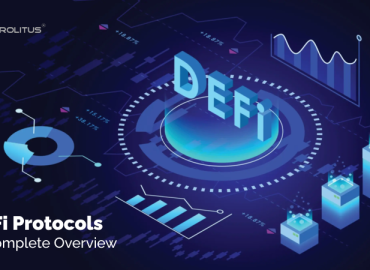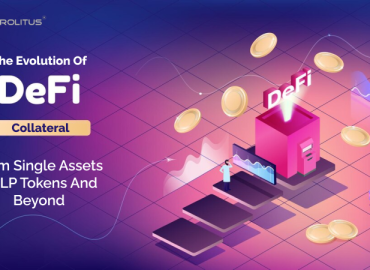DeFi Demystified: Introduction to Liquidity Pools
In recent years, the world of finance has witnessed a profound transformation through the advent of decentralized finance, or DeFi. This revolutionary ecosystem offers individuals the opportunity to engage in financial activities without the need for traditional intermediaries like banks. At the heart of DeFi lies the concept of liquidity, a crucial element for the smooth operation of any financial market. In this introduction to liquidity pools in DeFi, we will unravel the mysteries behind this fundamental concept, shedding light on its significance and how it has reshaped the way we think about finance.
Liquidity pools serve as the cornerstone of the DeFi landscape, enabling participants to provide their assets to a pool that others can trade against. Unlike traditional financial systems where liquidity is controlled by centralized institutions, DeFi liquidity pools are decentralized, giving users unprecedented control over their funds. These pools facilitate various financial activities, including lending, borrowing, trading, and yield farming, while offering users the opportunity to earn fees and rewards in return for their contributions. As we delve deeper into this fascinating world, we will explore the inner workings of liquidity pools, their benefits, risks, and the transformative potential they hold for the future of finance. Join us on this journey to demystify DeFi and gain a comprehensive understanding of liquidity pools and their pivotal role in reshaping the financial landscape.
Liquidity Pools: Revolutionize Financial Markets
Liquidity pools have emerged as a groundbreaking innovation in the realm of decentralized finance (DeFi), ushering in a new era of accessibility, efficiency, and inclusivity in financial markets. Their revolutionary impact can be observed through several key facets.
First and foremost, liquidity pools address the long-standing issue of liquidity fragmentation. In traditional financial markets, liquidity is often dispersed across various centralized exchanges, making it challenging for traders to access deep and diverse order books. Liquidity pools aggregate assets from numerous participants into a single, shared pool, creating a more consolidated and robust source of liquidity. This consolidation not only enhances market depth but also reduces price discrepancies between different trading venues, thus promoting fairer and more efficient price discovery.
Moreover, liquidity pools remove many of the barriers associated with traditional financial intermediaries. In traditional markets, market makers and intermediaries play a pivotal role in providing liquidity, often at a cost to traders. In contrast, DeFi liquidity pools enable anyone to become a liquidity provider, democratizing the process and allowing individuals to earn fees by contributing their assets. This democratization not only lowers the barriers to entry but also reduces the reliance on centralized intermediaries, fostering financial inclusivity.
Furthermore, liquidity pools facilitate decentralized exchanges (DEXs), which offer users the ability to trade assets directly without relying on intermediaries. This eliminates counterparty risk, enhances user privacy, and reduces the need for complex regulatory compliance. DEXs can operate 24/7, promoting accessibility to global markets and providing individuals with greater control over their assets.
The role of liquidity pools extends beyond trading and extends into lending and borrowing platforms. These platforms enable users to deposit their assets into liquidity pools as collateral, opening up opportunities for borrowing and lending without traditional credit checks or intermediaries. The interest rates for borrowers and the rewards for lenders are determined by the supply and demand within these liquidity pools, creating a more dynamic and decentralized lending market.
DeFi Liquidity Pools vs. Traditional Liquidity
The financial landscape has evolved significantly in recent years, with the rise of decentralized finance (DeFi) challenging traditional financial systems. A key aspect of this transformation is the emergence of DeFi liquidity pools, which operate differently from traditional liquidity sources. Let’s explore the key differences between DeFi liquidity pools and traditional liquidity.
Centralization vs. Decentralization:
- Traditional Liquidity: Traditional financial markets rely on centralized intermediaries, such as banks and financial institutions, to provide liquidity. These intermediaries control the flow of funds and often have significant influence over market dynamics.
- DeFi Liquidity Pools: DeFi liquidity pools operate in a decentralized manner, without a central authority. Participants contribute assets directly to smart contracts, creating shared pools of liquidity. This decentralized nature reduces reliance on intermediaries and enhances trust in the system.
Accessibility:
- Traditional Liquidity: Access to traditional liquidity sources is often restricted and requires approval, compliance with regulatory requirements, and significant capital. Retail investors may have limited access to these markets.
- DeFi Liquidity Pools: DeFi liquidity pools are open to anyone with an internet connection and cryptocurrency assets. Users can become liquidity providers with relatively small amounts of capital, democratizing access to liquidity.
Transparency:
- Traditional Liquidity: Traditional financial systems can lack transparency, with opaque processes and limited visibility into the inner workings of intermediaries.
- DeFi Liquidity Pools: DeFi operates on blockchain technology, providing transparency through immutable, publicly accessible ledgers. Users can verify transactions, pool balances, and fee structures on the blockchain.
Liquidity Provider Incentives:
- Traditional Liquidity: Liquidity providers in traditional markets typically earn a fixed interest rate, which may not always reflect market conditions.
- DeFi Liquidity Pools: DeFi liquidity providers earn a portion of trading fees generated by the pool, as well as potential rewards in the form of governance tokens or other incentives. Earnings are more closely tied to market activity.
Market Hours:
- Traditional Liquidity: Traditional financial markets often have specific trading hours and are closed on weekends and holidays.
- DeFi Liquidity Pools: DeFi operates 24/7, allowing users to trade and provide liquidity at any time, enhancing accessibility for global participants.
DeFi liquidity pools and traditional liquidity sources differ significantly in terms of centralization, accessibility, transparency, control, incentives, and market hours. DeFi liquidity pools have the potential to disrupt traditional financial systems by offering a more inclusive, transparent, and decentralized approach to liquidity provision and financial services.
Popular DeFi Projects Utilizing Liquidity Pools
Numerous popular DeFi projects have harnessed the power of liquidity pools to offer a range of decentralized financial services and opportunities for users. Here are some notable DeFi projects that utilize liquidity pools:
- Uniswap: Uniswap is one of the most well-known decentralized exchanges (DEXs) in the DeFi space. It allows users to swap various cryptocurrencies directly from their wallets. Liquidity providers on Uniswap contribute assets to liquidity pools, earning fees in return.
- SushiSwap: SushiSwap is another DEX that forked from Uniswap. It introduced the concept of yield farming and staking SUSHI tokens to incentivize liquidity providers. SushiSwap has gained popularity for its innovative approaches to liquidity provision and governance.
- Balancer: Balancer is a DeFi platform that enables users to create and manage automated portfolio-based liquidity pools. These pools can contain multiple assets with customizable weightings, allowing for more flexible strategies. Liquidity providers can earn fees from swaps and rewards in the form of BAL tokens.
- Curve Finance: Curve Finance specializes in stablecoin trading pools, providing low-slippage swaps between various stablecoins like DAI, USDC, and USDT. Liquidity providers earn fees from stablecoin swaps and receive CRV tokens as rewards.
- Aave: Aave is a decentralized lending and borrowing platform that utilizes liquidity pools to match borrowers and lenders. Users can deposit their assets into liquidity pools and earn interest while borrowers can access loans using their deposited collateral. AAVE is the platform’s governance token.
- CurveDAO: CurveDAO is the governance token of Curve Finance and plays a crucial role in the platform’s decision-making processes. It rewards liquidity providers for participating in the stablecoin pools.
These DeFi projects showcase the versatility and innovation within the DeFi ecosystem, with liquidity pools playing a central role in providing liquidity for decentralized exchanges, lending and borrowing platforms, and other financial services. It’s important to note that the DeFi landscape is dynamic, and new projects and innovations are continually emerging.
Liquidity Pool Strategies: Maximizing Your Returns
Participating in DeFi liquidity pools can be a rewarding venture, but it also comes with its unique set of risks and challenges. To maximize your returns while minimizing potential pitfalls, consider the following liquidity pool strategies:
- Diversify Your Pool Holdings: Instead of concentrating your assets in a single liquidity pool, consider diversifying across multiple pools. This strategy helps spread risk and reduces your exposure to a specific asset’s price volatility. Diversification can also increase your chances of earning consistent returns across various pools.
- Analyze Pool Metrics: Before providing liquidity to a pool, carefully analyze its historical performance, liquidity depth, trading volume, and fees. Look for pools with stable or growing trading volumes and competitive fee structures. Websites like DeFi Pulse and DappRadar provide valuable metrics for liquidity pools.
- Select Stablecoin Pairs: Liquidity pools involving stablecoins (e.g., DAI, USDC) tend to have lower volatility and offer more predictable returns compared to pools with volatile assets. Stablecoin pools are suitable for risk-averse liquidity providers seeking a more stable income.
- Utilize Automated Tools: DeFi platforms and third-party tools offer automated strategies for optimizing liquidity pool returns. Tools like Yearn.Finance and Balancer provide yield farming strategies that automatically shift your assets between pools to maximize returns.
- Participate in Yield Farming: Some liquidity pools offer additional rewards, such as governance tokens or platform-specific tokens, for liquidity providers. Yield farming involves staking your LP tokens to earn these rewards in addition to trading fees. However, be aware of the risks associated with new, unaudited projects.
- Stay Informed About Governance Decisions: If a liquidity pool is governed by a decentralized autonomous organization (DAO), stay informed about governance proposals and decisions. Participating in governance can allow you to influence fee structures and other parameters that affect your returns.
- Monitor Pool Health: Regularly check the status of the liquidity pool you’ve contributed to. Ensure that the pool remains sufficiently capitalized to handle trading activity without excessive slippage. Withdraw your assets if the pool’s health deteriorates.
Maximizing returns in liquidity pools requires a combination of thoughtful planning, ongoing monitoring, and risk management. By diversifying, staying informed, and utilizing available tools, liquidity providers can optimize their earnings in the dynamic world of decentralized finance.
The Final Thought
In the ever-evolving landscape of decentralized finance, liquidity pools stand as both the foundation and the vanguard of innovation. They represent a profound shift away from traditional financial intermediaries and centralized systems, empowering individuals to participate in a more open and inclusive financial ecosystem. As we peer into the future of DeFi, it’s clear that liquidity pools will continue to lead the way, reshaping the way we trade, invest, and access financial services.
However, with this exciting potential comes a responsibility to navigate the challenges that lie ahead. Regulatory scrutiny, security concerns, and the need for greater transparency will shape the path forward. It’s essential for the DeFi community to find a balance between innovation and compliance, safeguarding the principles of decentralization while respecting the rules and norms of the wider financial world.
The future of DeFi and liquidity pools is a journey marked by both opportunities and obstacles. As we venture further into this brave new world, let’s remember that the true power of DeFi lies not only in maximizing returns but also in the promise of financial empowerment, financial inclusion, and the democratization of finance. With careful consideration, responsible participation, and a commitment to the ideals of decentralization, we can collectively shape a brighter and more equitable financial future for all.
Why should you choose Prolitus for developing Defi solutions?
Are you ready to navigate the exciting world of decentralized finance (DeFi)? Our blog, “An Introduction to Liquidity Pools in DeFi,” is your gateway to understanding the heart of DeFi’s liquidity infrastructure.
In the rapidly evolving landscape of blockchain and cryptocurrency, DeFi liquidity pools have become a pivotal component. At Prolitus, we’re passionate about demystifying complex concepts and empowering you to make informed decisions in the crypto space.
Join us as we unravel the mysteries of liquidity pools, exploring their significance in providing liquidity, their role in yield farming, and their impact on reshaping the financial industry. Whether you’re a seasoned DeFi enthusiast or just starting your journey, our blog offers valuable insights for everyone.
Trust Prolitus to be your DeFi guide, simplifying the intricate world of liquidity pools. Start your journey toward financial empowerment and blockchain enlightenment today by reading our blog on DeFi liquidity pools.
Empower your DeFi development knowledge with Prolitus. Your gateway to DeFi awaits.





